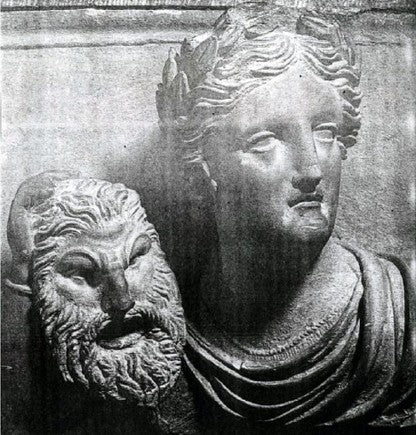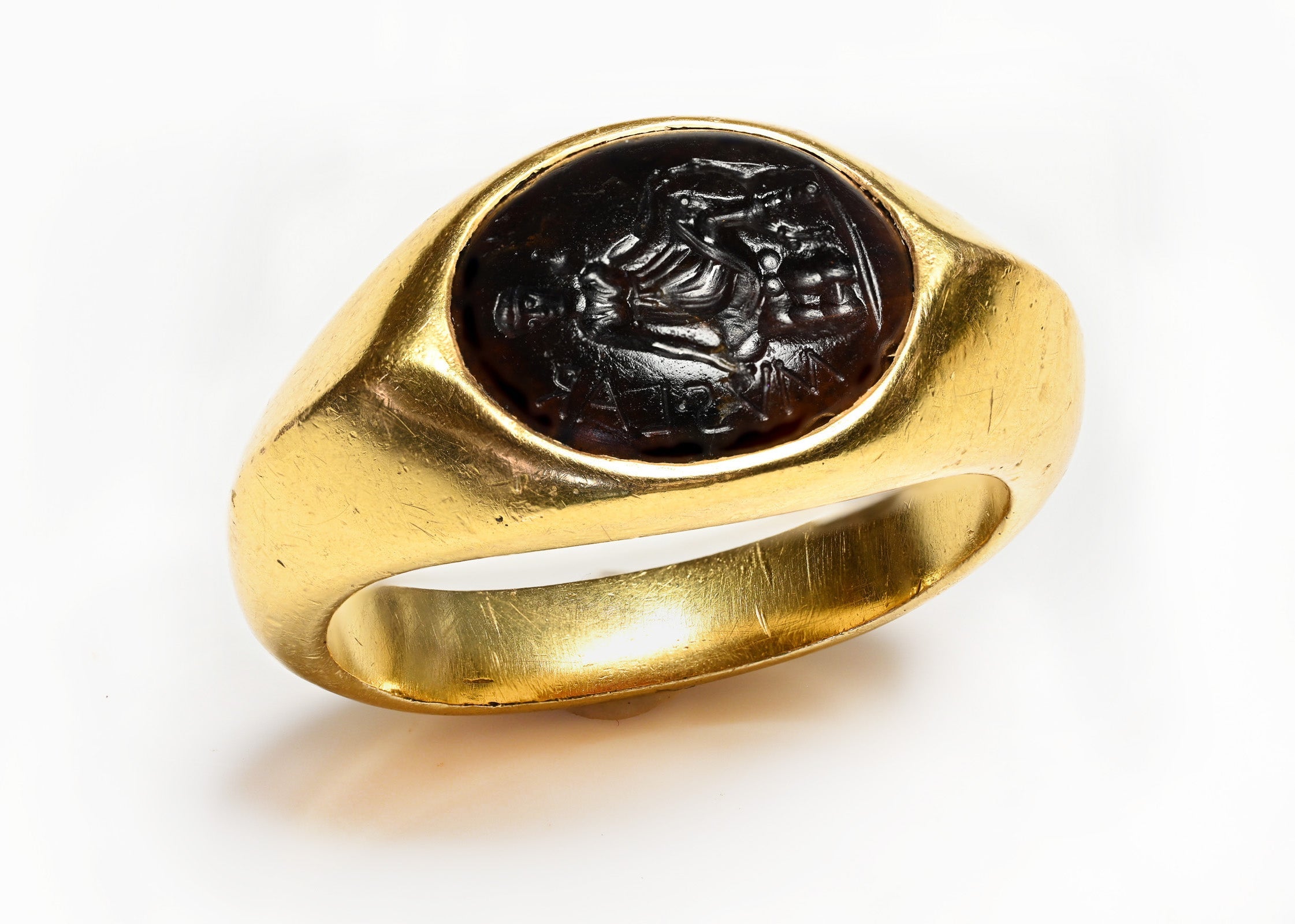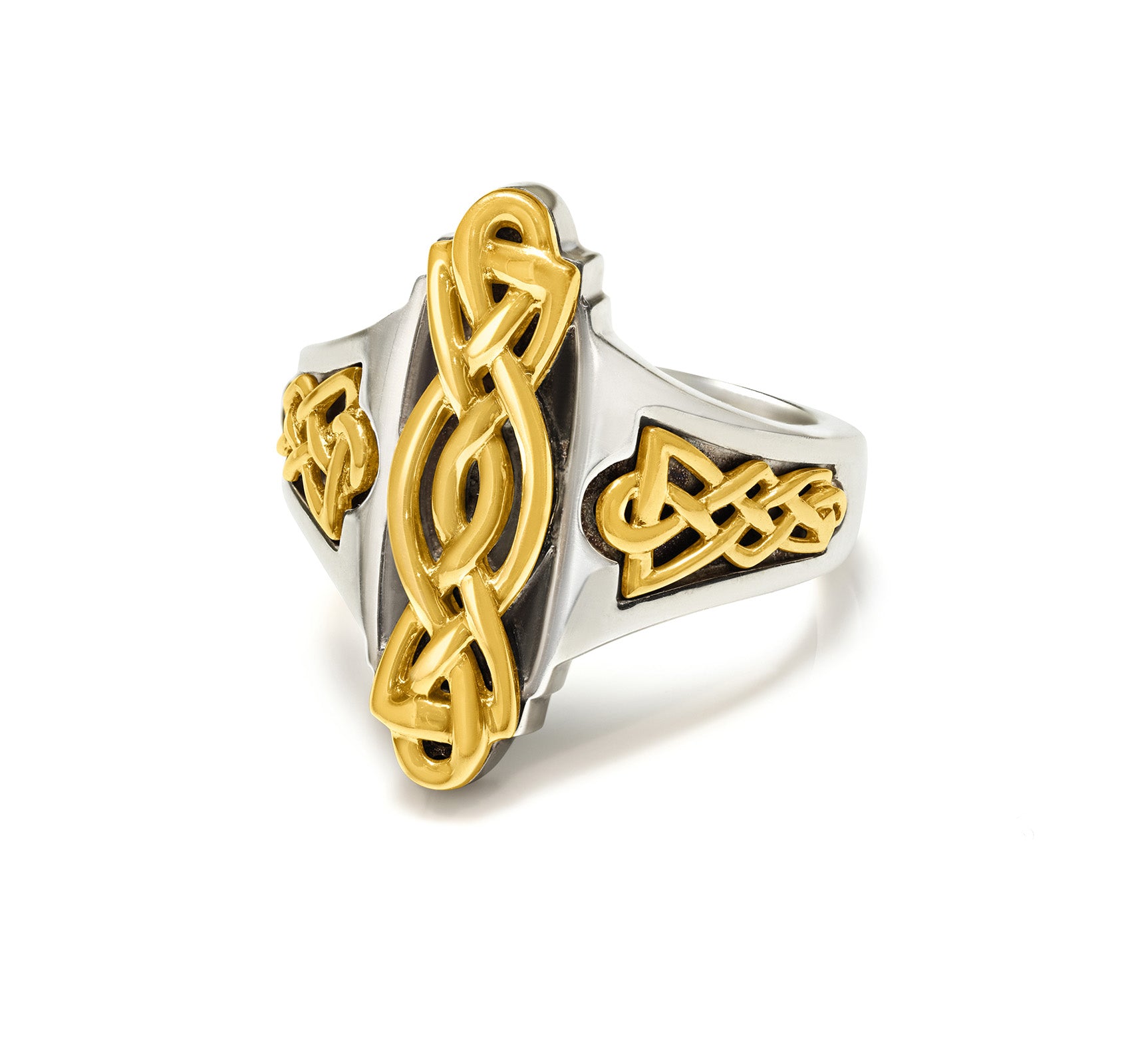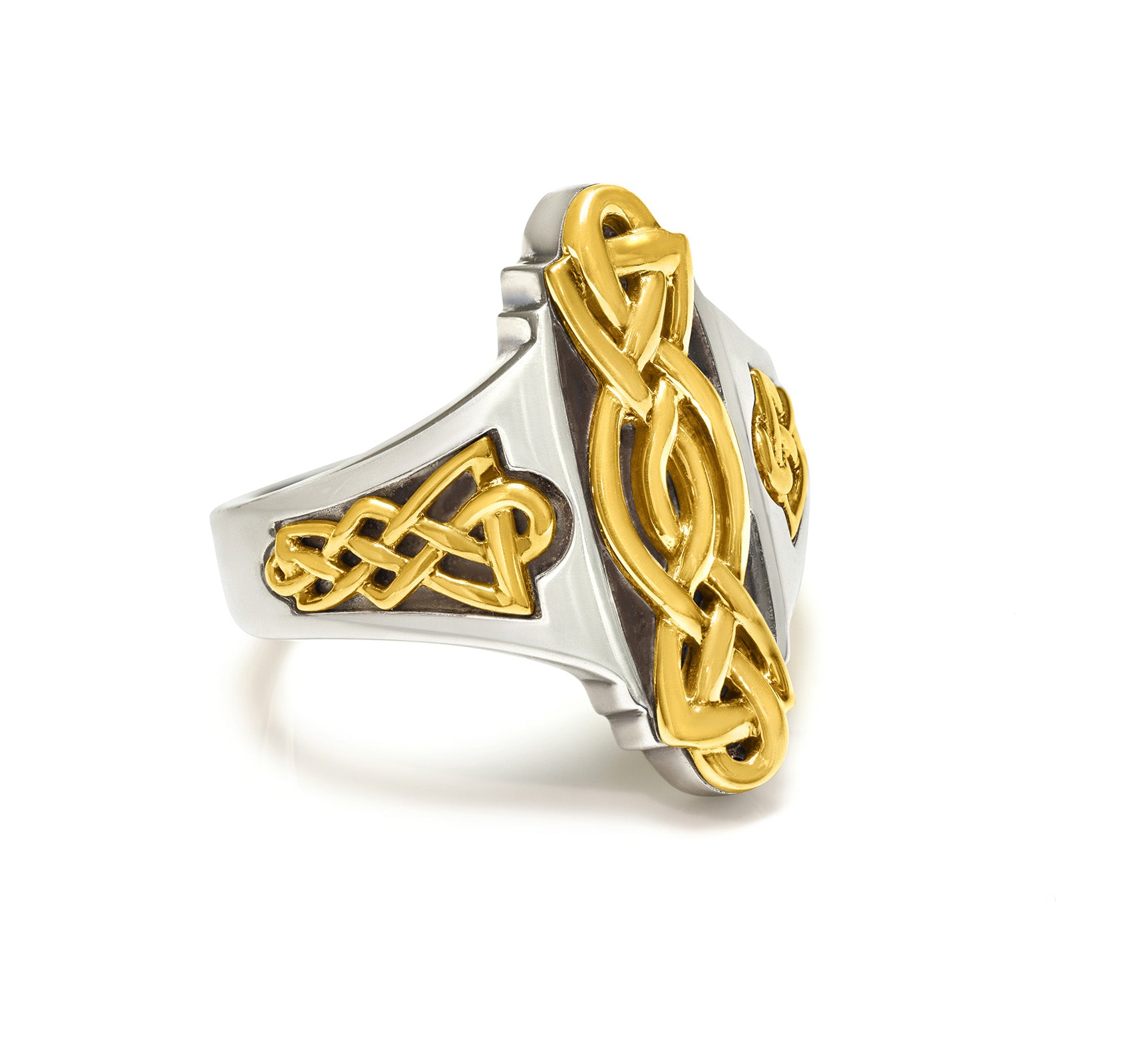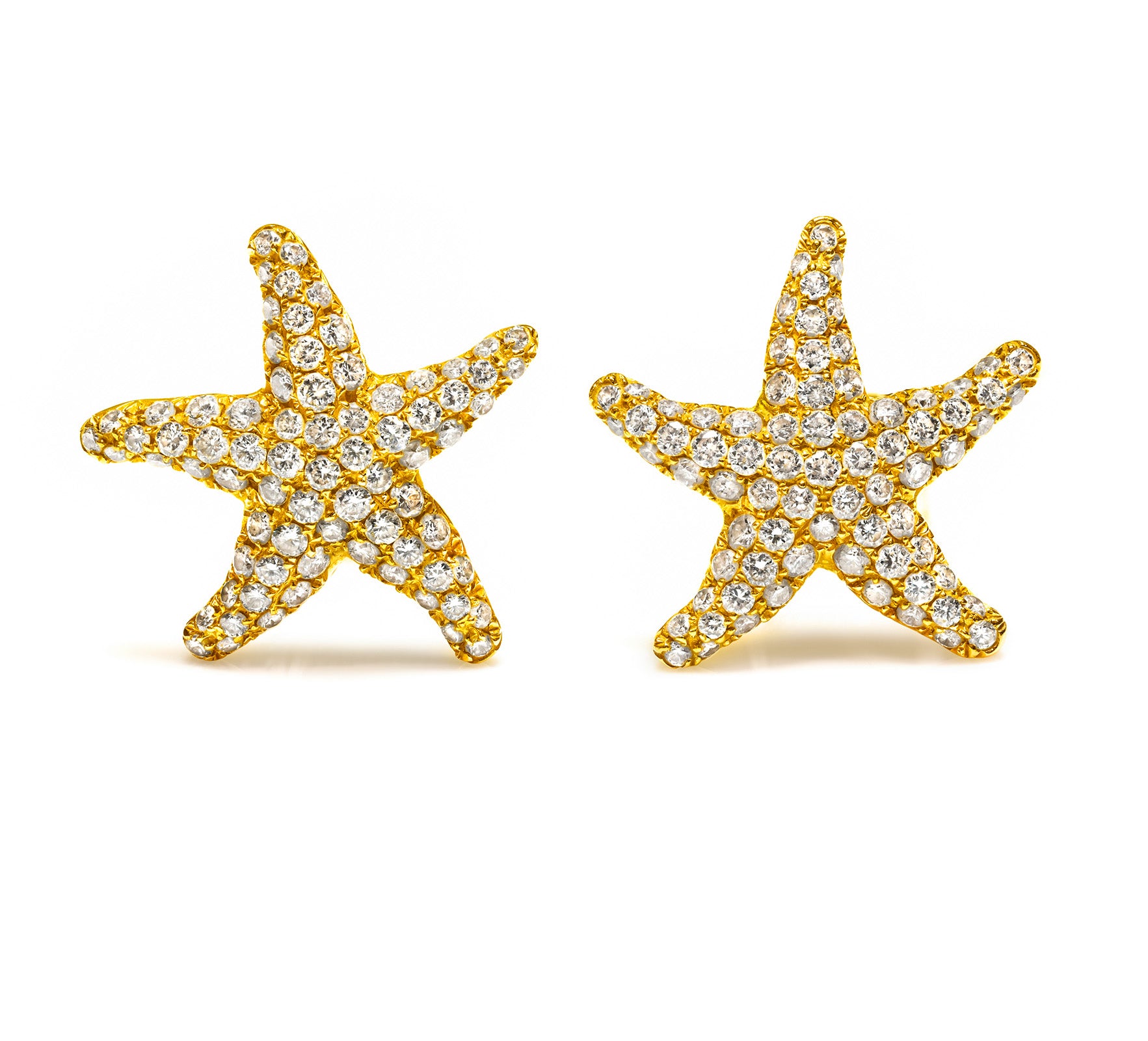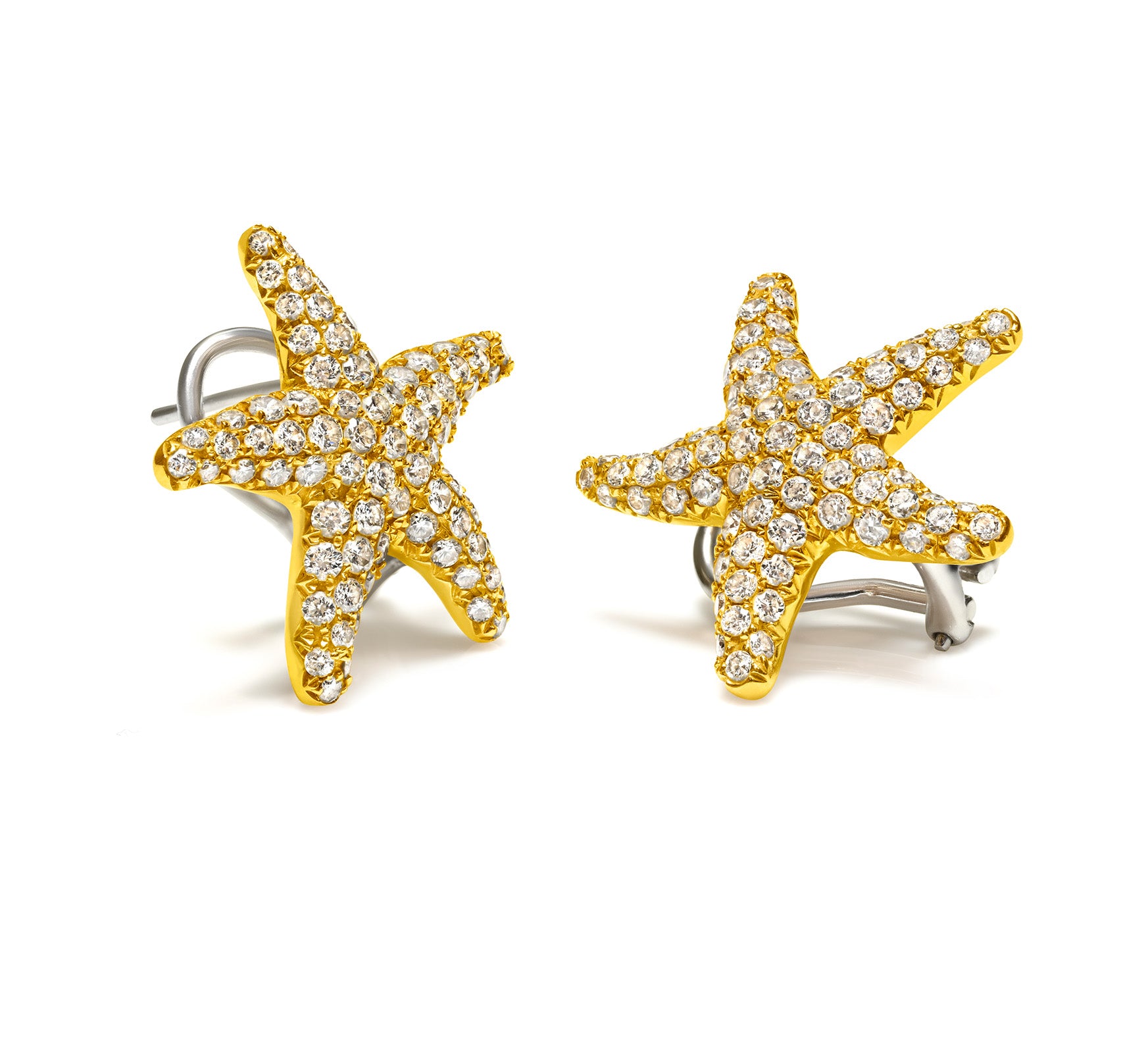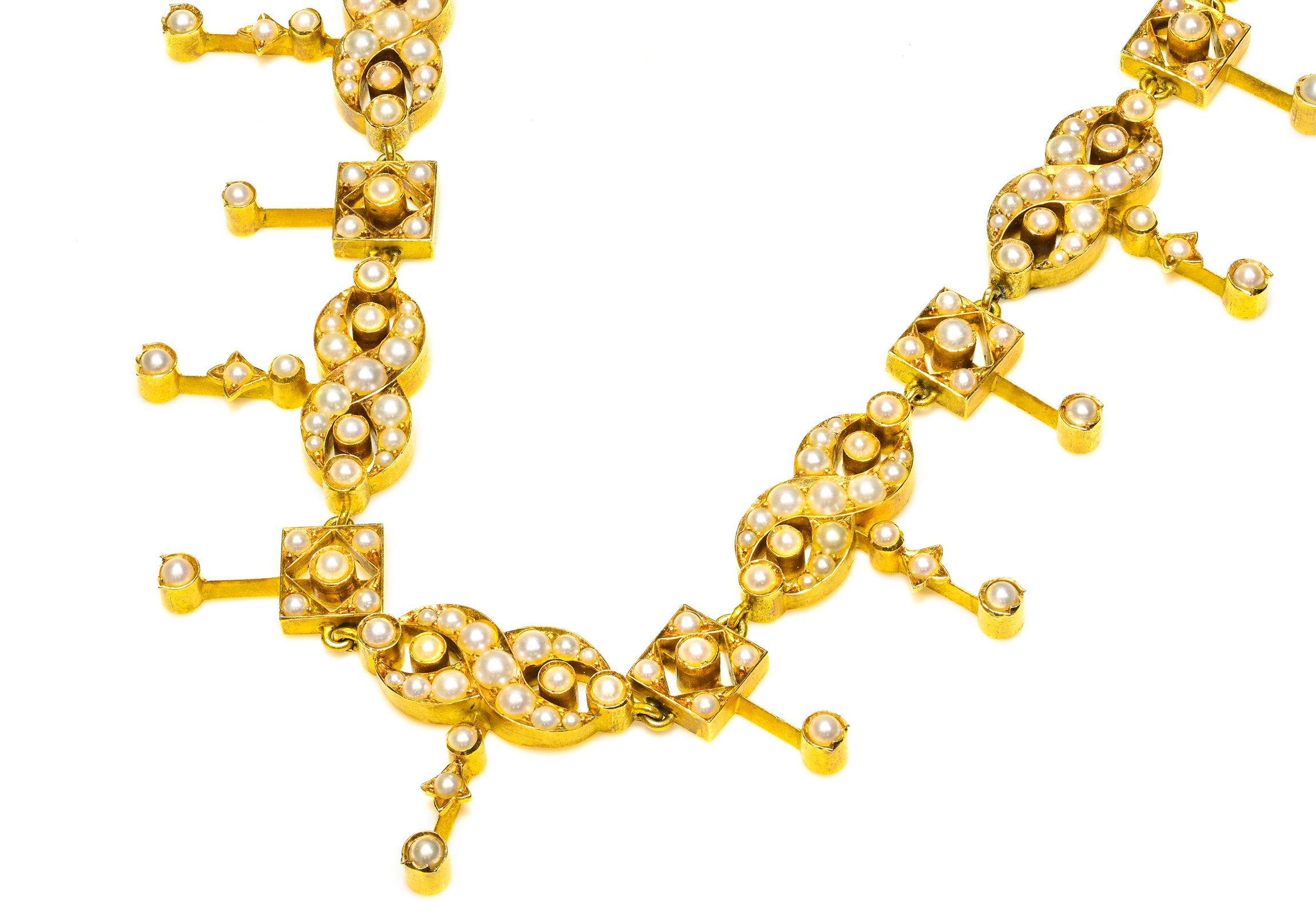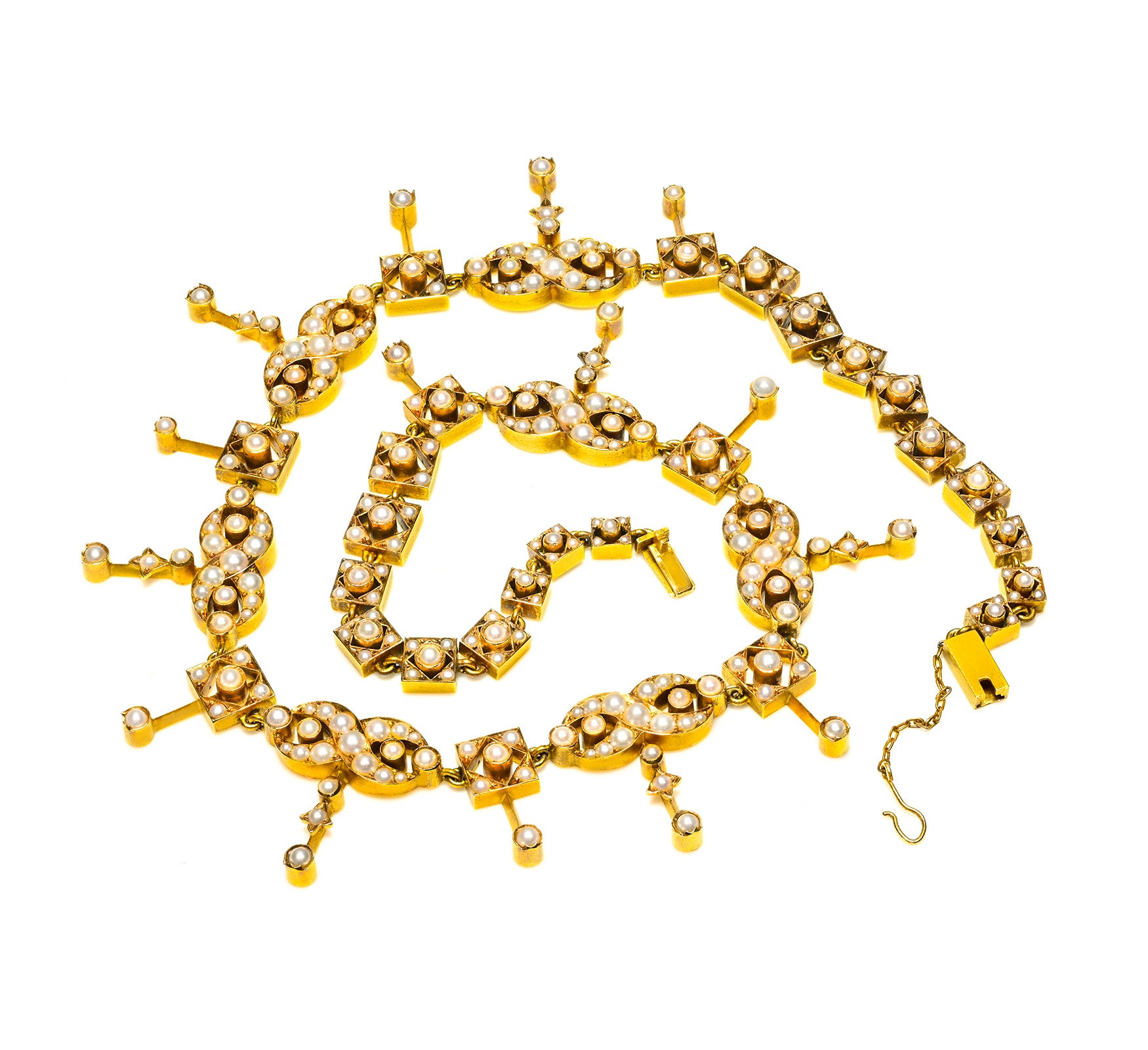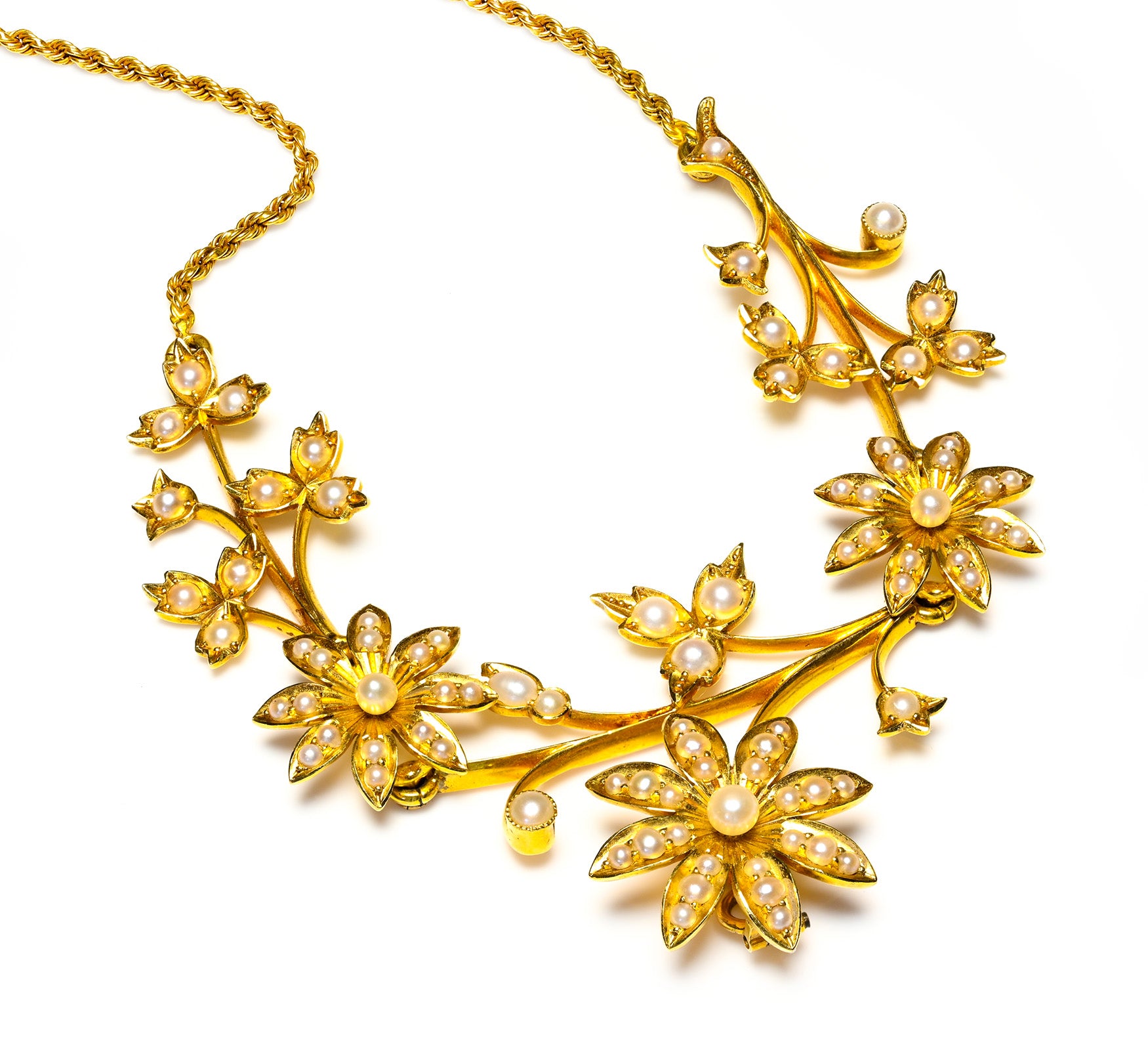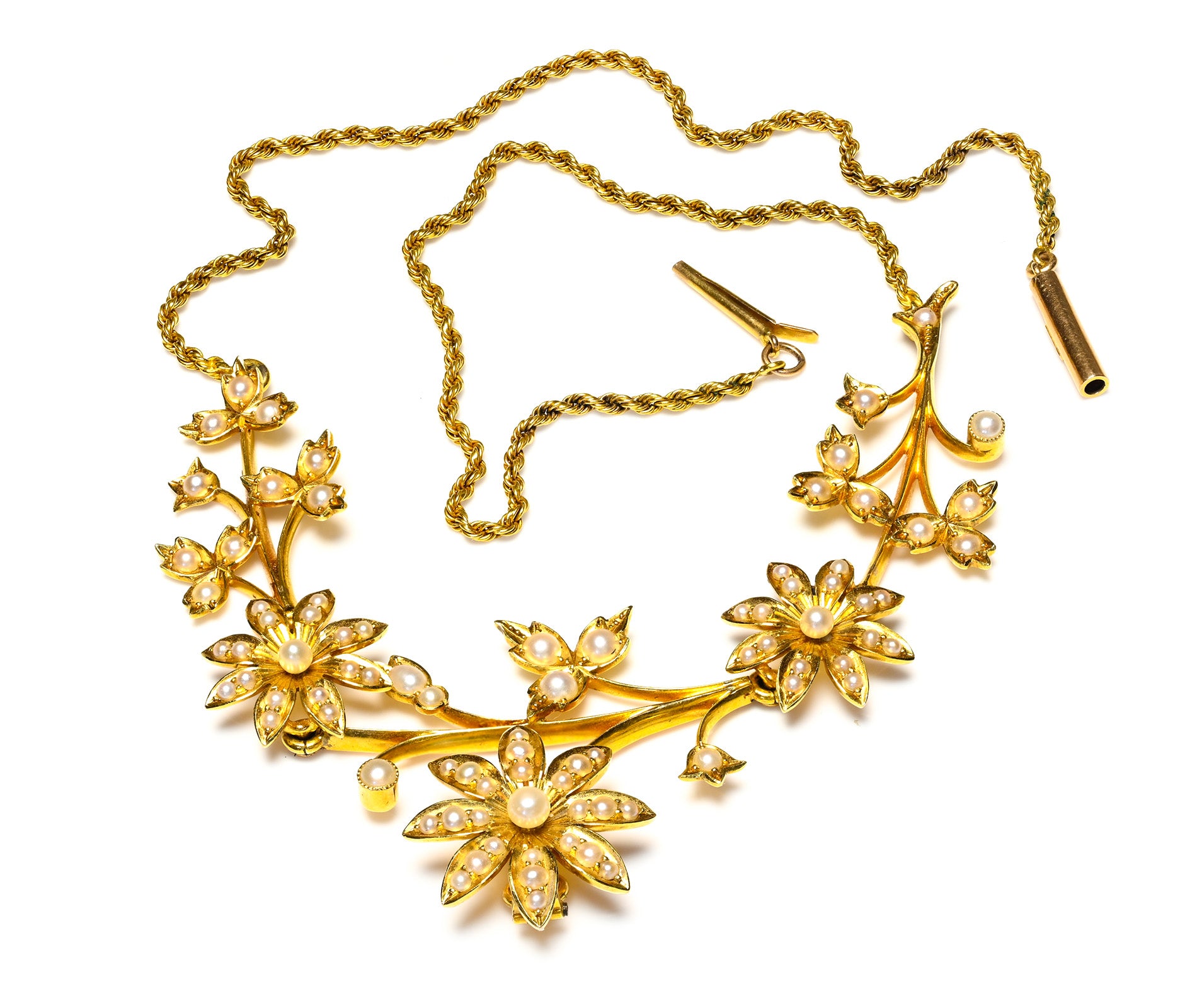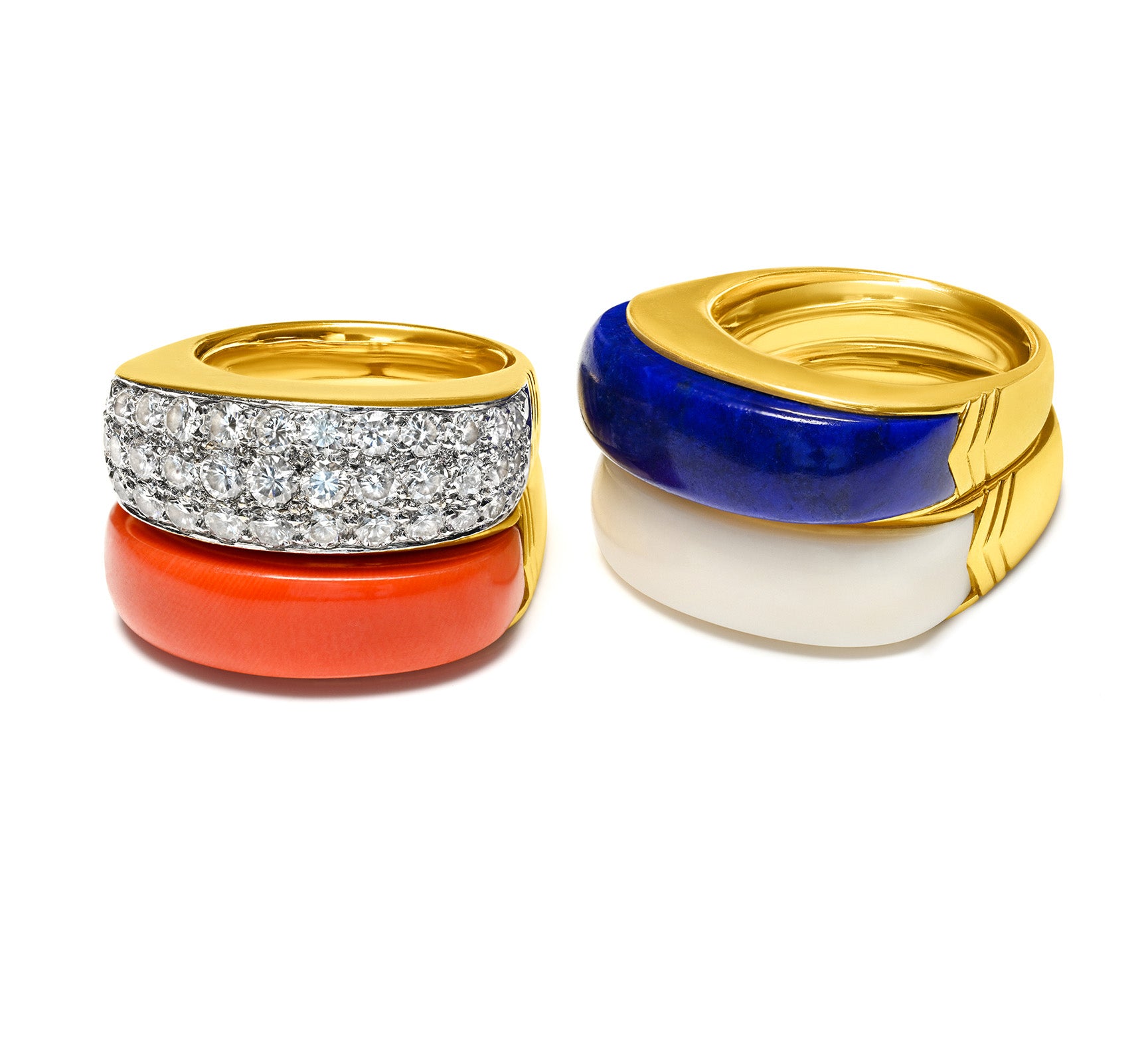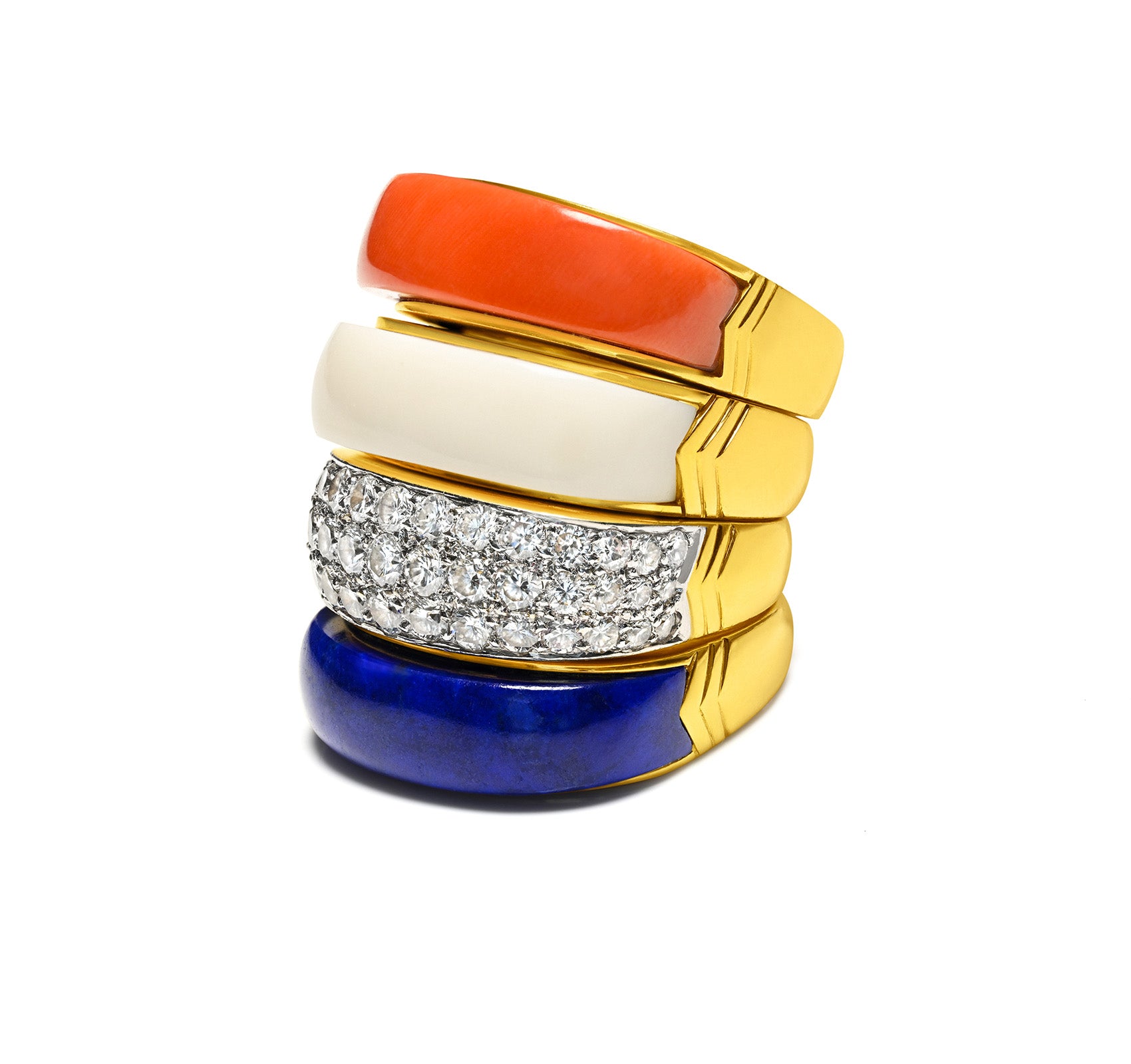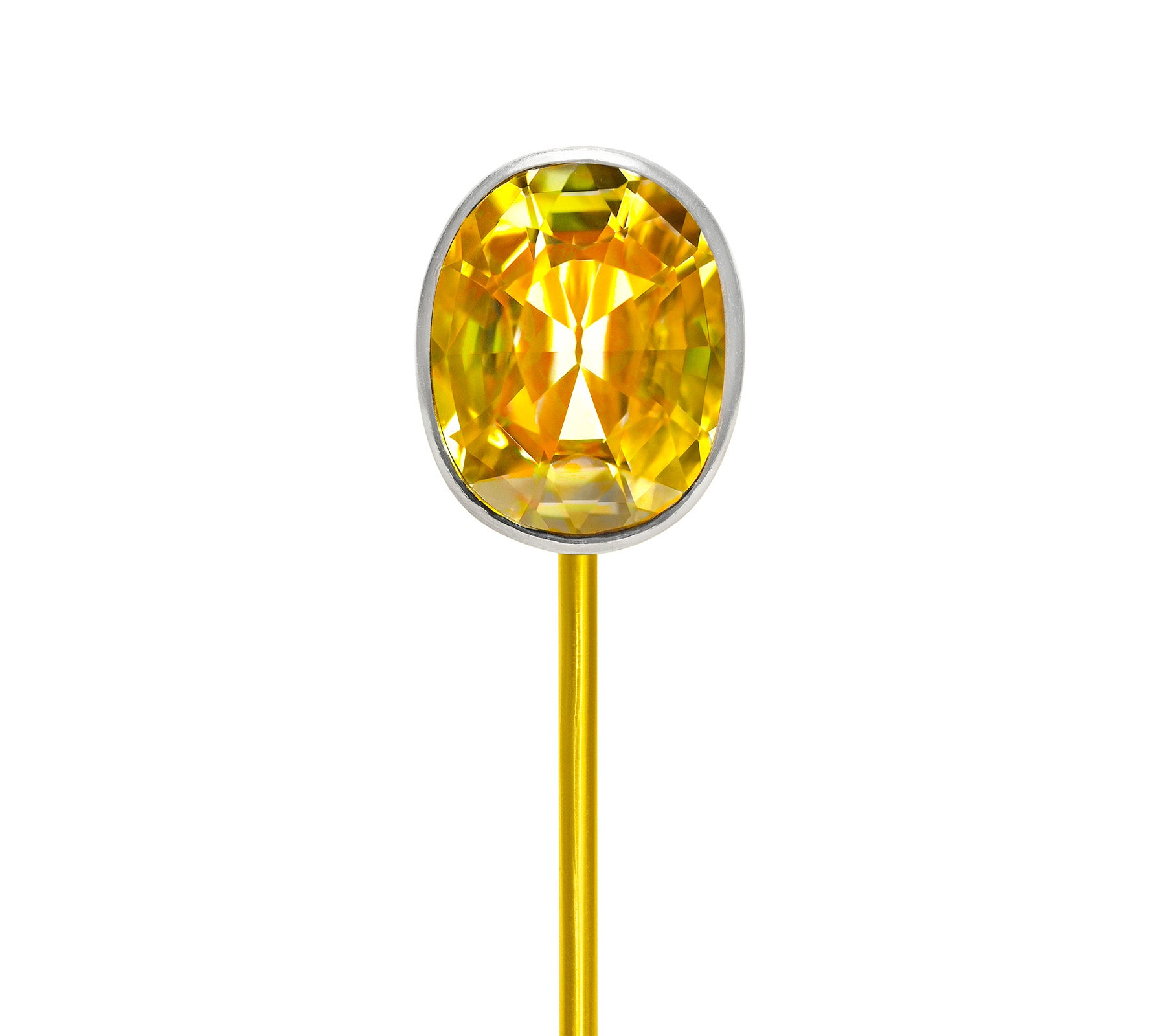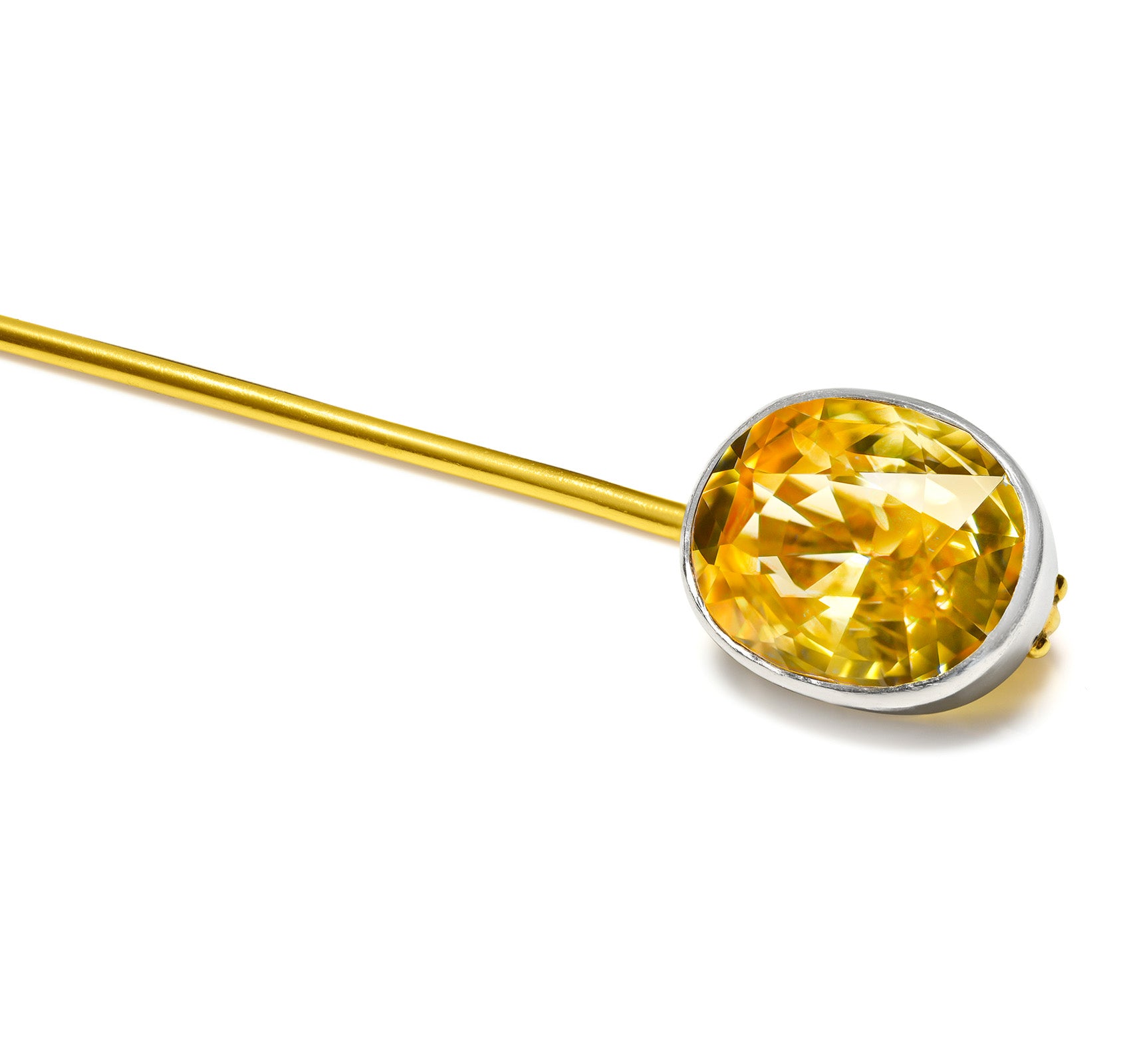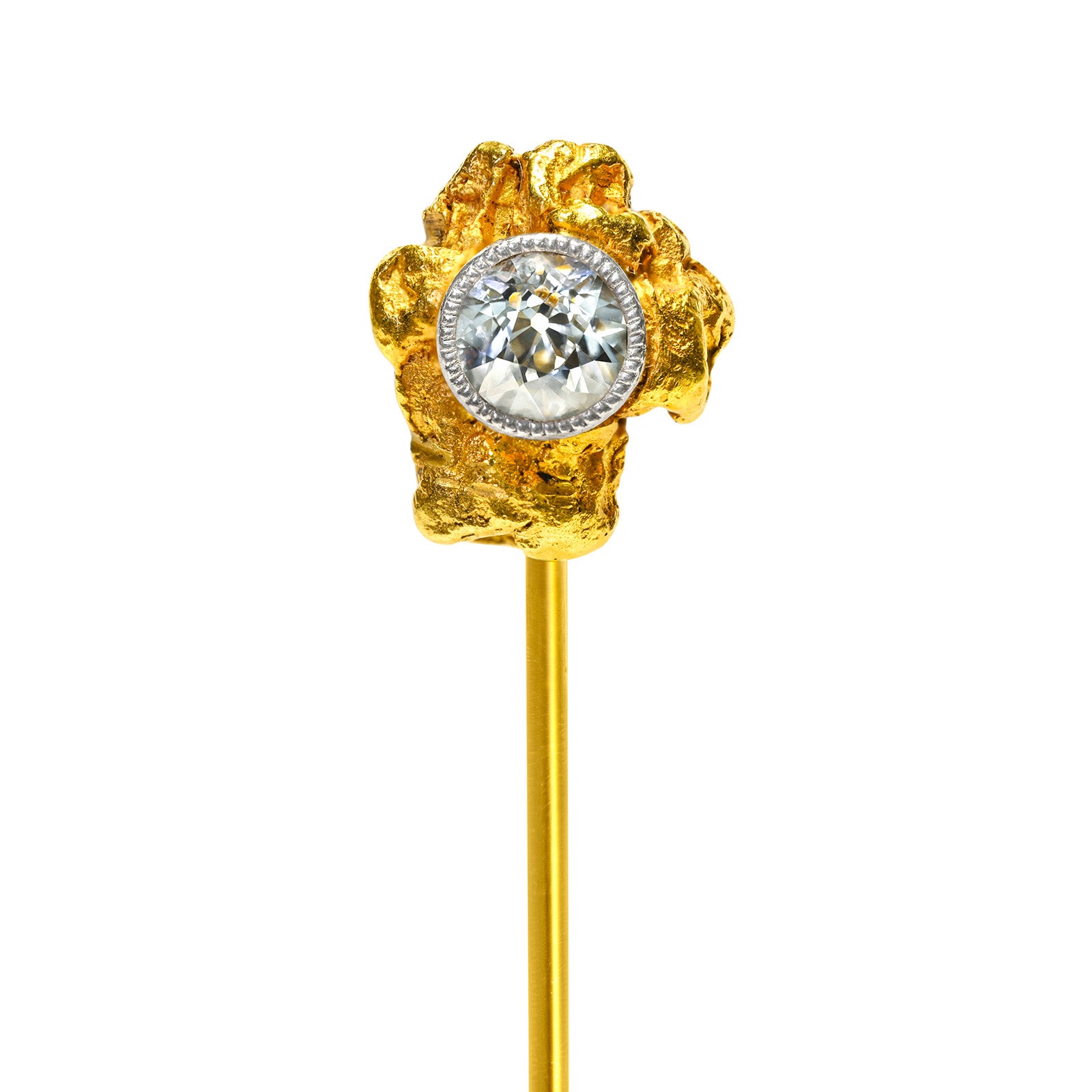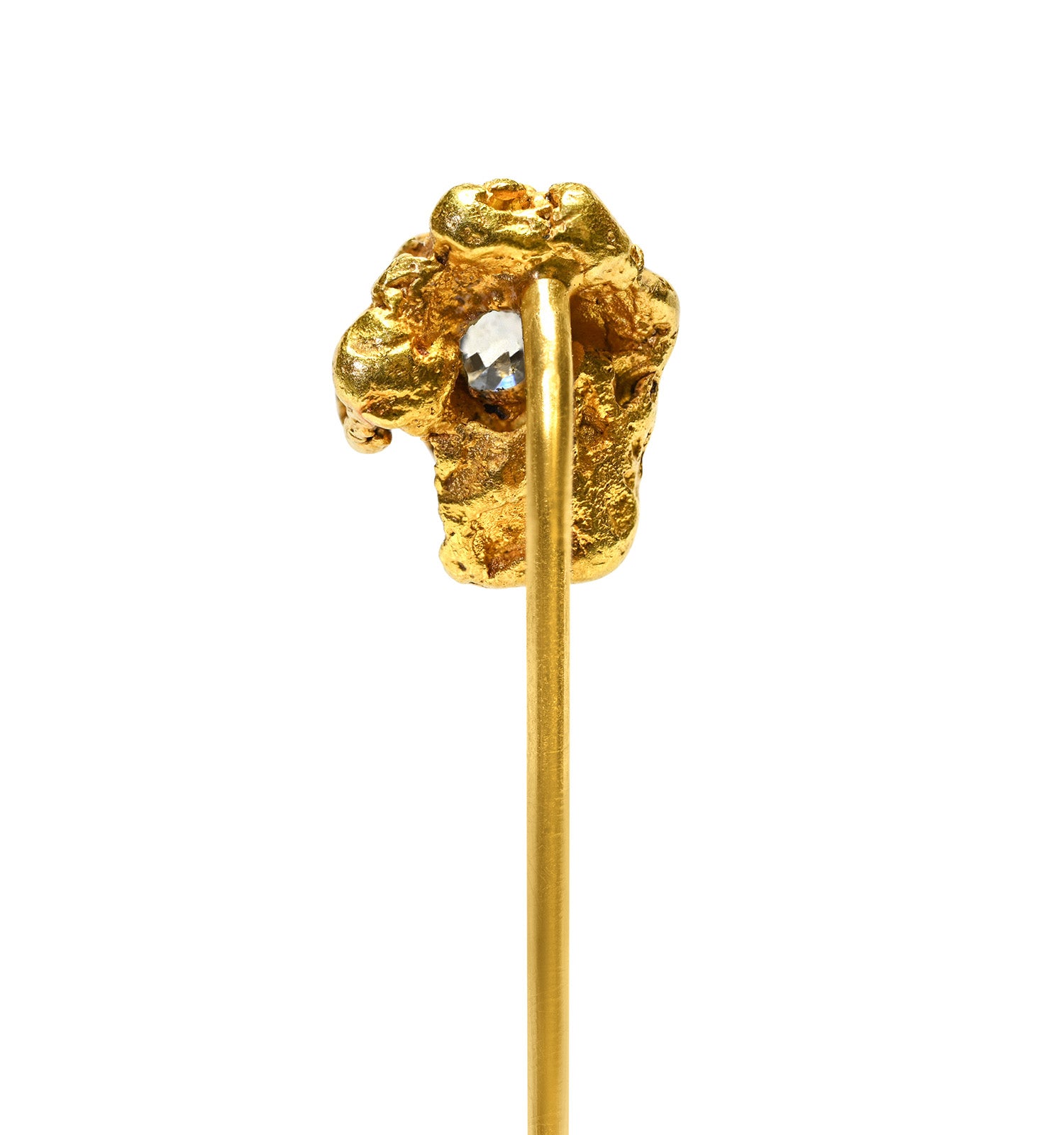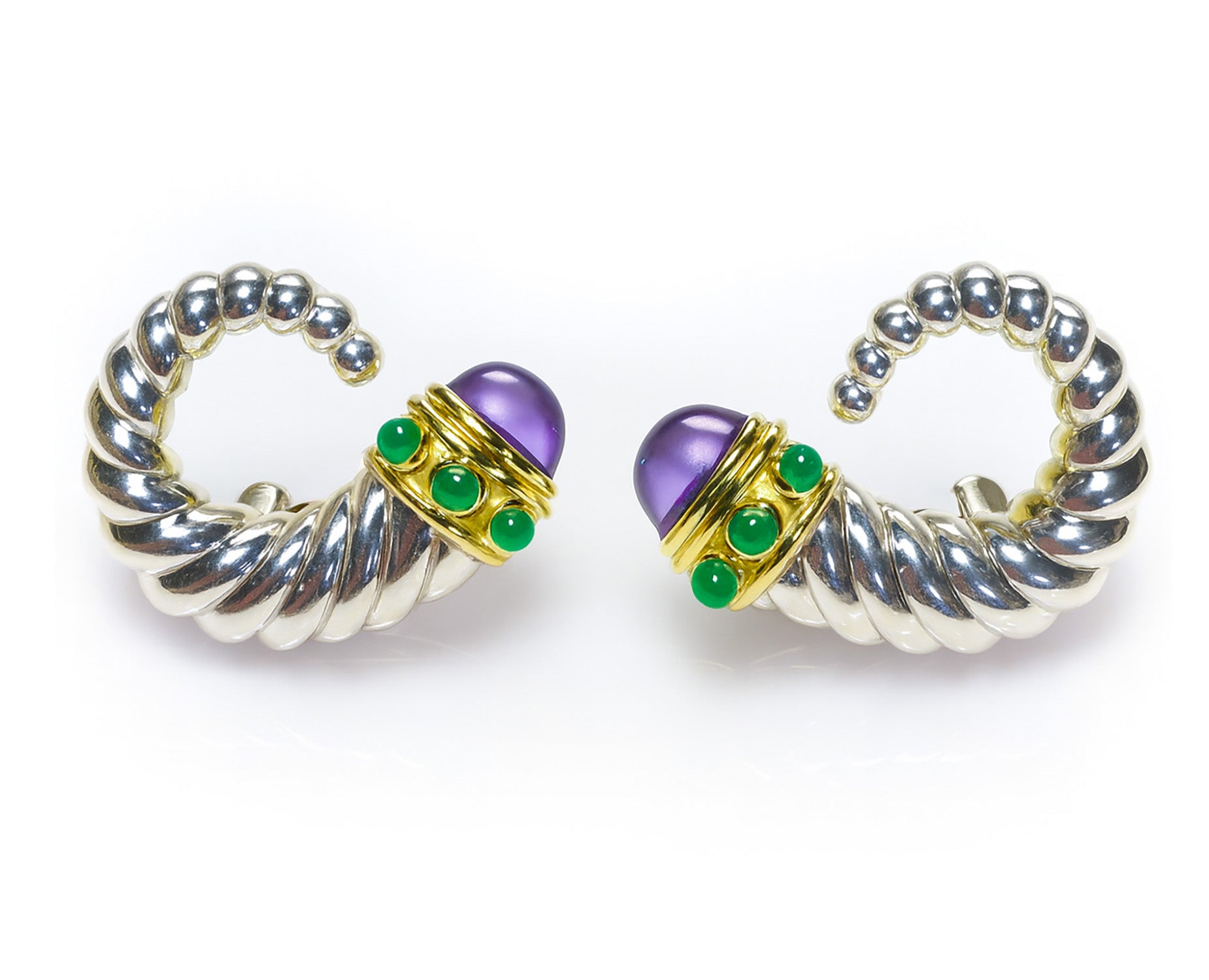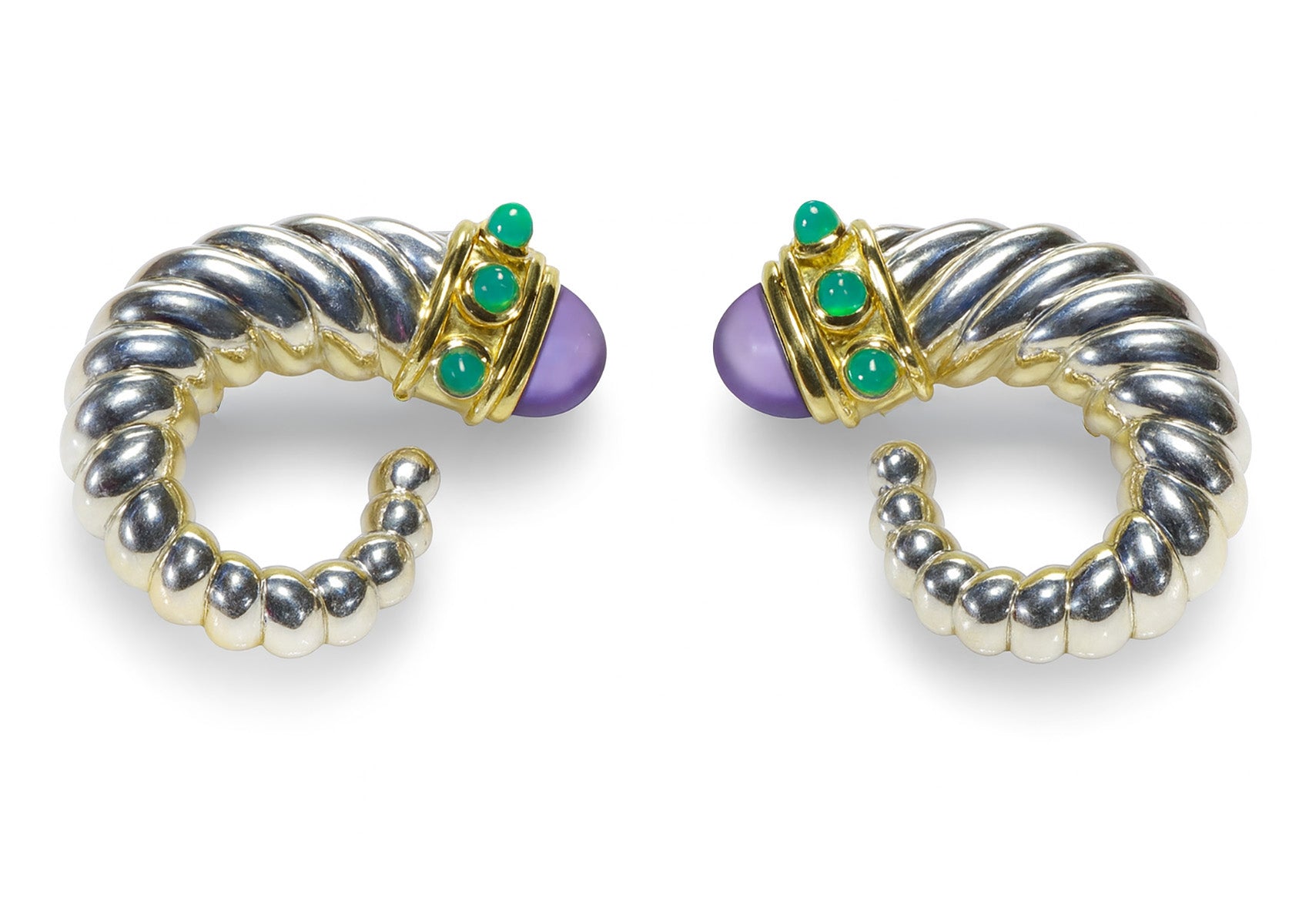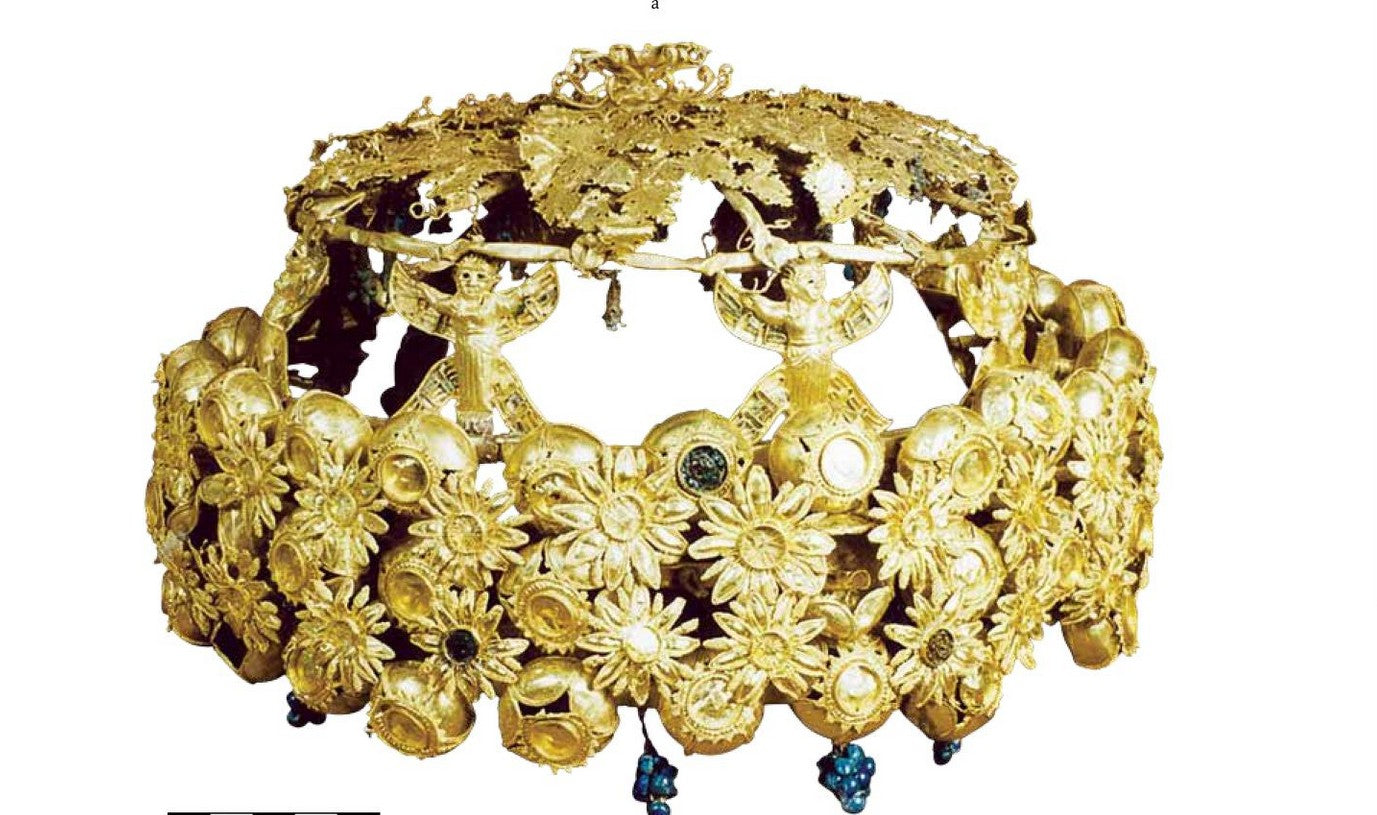
Sumerian Jewelry – A Journey Into The Vault Of Ancient Mysteries
The Sumerians are widely recognized as some of the earliest creators and designers of jewelry. This assertion is supported by numerous fascinating artifacts unearthed in ancient tombs, including bracelets, armlets, earrings, and various types of necklaces.
Many individuals were interred adorned with their most precious jewelry, signifying the profound cultural and spiritual value these adornments held.

Sumerian necklaces and headgear (Source: British Museum via Wikimedia Commons)
Sumerian Jewelry: A Legacy of Ancient Mesopotamia
Emerging during the Chalcolithic and early Bronze Ages, roughly in the sixth and fifth millennia BC, Sumer is acknowledged as the oldest known civilization.
Situated in the historical region of southern Mesopotamia (modern-day south-central Iraq), Sumer is considered—alongside ancient Egypt, the Indus Valley, China’s Erligang culture, Caral-Supe, and Mesoamerica—as one of humanity's primary cradles of civilization.
Sumerian artisans were pioneers, mastering sophisticated jewelry techniques such as granulation and filigree. Their craftsmanship included creating intricate chains, delicate beadwork, and finely detailed pieces with precious stone inlays. The vibrant color combinations and innovative designs they employed reveal exceptional creativity, producing timeless jewelry pieces that remain strikingly unique even today.
Driven by an intense passion for beauty and distinctiveness, these master jewelers created adornments not merely to embellish but also to symbolize identity, status, and spirituality.
The Multifaceted Role of Sumerian Jewelry
Jewelry in Sumerian society served multiple purposes. Both men and women adorned themselves with jewelry not only for decoration but also as dowries, inheritances, wedding gifts, and burial offerings.
It functioned as a diplomatic tool, a symbol of military triumph, and a contested source of wealth. Jewelry was also offered as a sacred tribute to the gods, presented ceremonially within temples.
Royals and members of the noble class prominently displayed jewelry as visible symbols of their prestige and social power.
The Originators of Mesopotamian Jewelry
While the Babylonians, Akkadians, and Assyrians significantly contributed to Mesopotamian jewelry traditions, the Sumerians are credited with producing some of the region’s most extraordinary jewelry masterpieces. Indeed, the foundational concepts behind both ancient and contemporary Mesopotamian jewelry-making were largely established by Sumerian artisans.
Ancient Sumerian jewelers primarily crafted their pieces using copper, gold, silver, and electrum. They incorporated a diverse array of gemstones, including jasper, agate, crystal, carnelian, chalcedony, lapis lazuli, onyx, and sardonyx. Among these, lapis lazuli was particularly prized, often valued more highly than gold itself.
According to Timeless Myths, less affluent members of Sumerian society commonly used shells and pearls for bracelets, necklaces, and armlets. Jewelry was typically assembled by shaping materials into beads, which were then meticulously strung in intricate patterns.
Archaeological finds have also uncovered gold jewelry exquisitely inlaid with precious stones. Sumerian goldsmiths demonstrated advanced skills, particularly in creating chains using loop-in-loop techniques and intricate filigree work.

A pair of golden earrings from the time of Shulgi, the second King of Ur (Source: Osama Muhammed via Wikimedia Commons)
The Sumerians skillfully balanced religious significance and artistic expression in each jewelry piece. Filigree, a prevalent Mesopotamian jewelry technique, involved welding twisted metal threads onto sheet backgrounds of varying thicknesses. This method created depth and color variations, enhancing the jewelry’s visual appeal.
Historical sources indicate that early Sumerians imported precious materials extensively. Gold and silver arrived from northern Iran and Anatolia, the highly valued lapis lazuli from Afghanistan, and carnelian from distant India. The demand for luxury items escalated with increasing wealth among nobility, though most Mesopotamian artisans themselves remained poor.
Unable to independently acquire materials from regions as far away as 1,500 kilometers, craftsmen relied on guilds operating under governmental control. These guilds acted as intermediaries, facilitating the flow of precious materials between royal patrons and local artisans.
As urban centers such as Nineveh, Babylon, Assur, and Ur rapidly expanded, jewelry-making transformed into a complex commercial industry. Artisans from lower socio-economic classes collaborated with Mesopotamia’s most talented masters, crafting exquisite jewelry that continues to captivate our imagination thousands of years later.
Mesopotamian Jewelry: Prestige, Power, and Afterlife
Jewelry held various significant roles within ancient Mesopotamian society. For royals, nobles, and prominent figures, it symbolized status and prestige. Consequently, monarchs were frequently interred with their most treasured pieces, underscoring the belief in jewelry’s significance in the afterlife.
A prime example is Queen Pu-Abi, whose tomb in the royal cemetery at Ur contained some of the most remarkable examples of Sumerian and Mesopotamian burial jewelry ever discovered. Such finds have greatly contributed to our understanding of the intricate role jewelry played within Mesopotamian culture.
The royal tombs at Nimrud and Ur stand out as the most significant archaeological sites revealing the wealth and diversity of Mesopotamian jewelry. Excavations at these locations have unearthed large quantities of adornments, providing invaluable insights into ancient jewelry types and their practical and ceremonial functions.


Source: oi.uhicago.edu via "Nimrud: The Queens' Tombs" by Muzahim Mahmoud Hussein, edited by McGuire Gibson and translated by Mark Altaweel
The Tombs at Nimrud
Within three tombs at Nimrud, archaeologists discovered approximately 1,500 pieces of ancient Mesopotamian jewelry, including several notable examples of Sumerian craftsmanship, collectively weighing around 100 pounds.
Even more extensive finds, however, emerged from the excavation of seventeen royal tombs at Ur, where massive quantities of jewelry were uncovered.
The practice of interring jewelry alongside the deceased greatly contributed to the preservation and survival of many remarkable pieces of Sumerian and Mesopotamian jewelry up to the present day.
Discoveries in Nimrud’s First Tomb
Most jewelry artifacts found in the first tomb at Nimrud were located inside the coffin itself, though some were scattered around on the chamber floor. These included rare gold pieces, some of which had never before been found in earlier Assyrian archaeological excavations.
The distribution of these items suggested regular usage in everyday life rather than purely ceremonial purposes. The skeleton found in this tomb lay on its back, oriented northward, with its head turned toward the west, as described by Muzahim Mahmoud Hussein in his book Nimrud: The Queen’s Tombs.
In front of the skeleton’s neck was a remarkable gold chain made from two intertwined strands, each woven in a delicate herringbone design. At each end, cylindrical finials decorated with granulated triangular motifs elegantly secured the chain.

Sumerian necklace beads (Source: Metropolitan Museum of Art via Wikimedia Commons)
On the left index finger of the skeleton, archaeologists found a sophisticated gold ring. Its band featured two deep grooves, within which pairs of ridged tubes were set, each originally housing square-shaped semiprecious stones, most now lost.
The same hand’s ring finger bore four carnelian rings: two plain, and two intricately carved. Each ring featured a high, hollowed shank with a central ridge culminating in a bulbous form, possibly intended to contain inlaid stones.
In addition, five matching gold earrings were discovered: two scattered amidst chamber debris and three positioned near the left side of the skeleton’s head within the coffin.
Finally, various stone pendants and amulets, shaped into animal forms and other symbolic figures, surrounded the body. Each item included perforations, suggesting they were worn suspended as jewelry or talismans, possibly serving protective or spiritual purposes in life and death.
Jewelry Found in Nimrud's Second Tomb
Beginning in 1989, archaeological excavations at Nimrud reached previously unexplored areas of King Ashurnasirpal II's palace, particularly the domestic wing, uncovering an extraordinary array of ancient jewelry artifacts.
According to Muzahim Mahmoud Hussein, this second tomb yielded hundreds of jewelry pieces, including diadem elements, collars, torcs, rings, earrings, pendants, and gold chains, reflecting the remarkable wealth and artistic sophistication of Mesopotamian craftsmanship.
Among the most stunning discoveries were two crescent-shaped gold earrings adorned with beads of carnelian, pale blue stone, and banded black-and-white agate. Intricately shaped like pomegranates with delicate gold tops, the largest beads hung prominently at the bottom of each earring. Another similar pair featured granulated triangles embellishing the crescent bodies, showcasing advanced decorative techniques.
An exquisite gold collar and matching earrings were also discovered near the upper skeleton's neck. The collar featured a flattened crescent-shaped central piece adorned at regular intervals by bundles of transverse ridges intersecting bands of vertical ridges. Ridged loops were attached along the lower edge, from which hung twenty-eight petals edged with fine granulation. Hinges at the crescent's upper ends connected it to sturdy, movable, curved gold shanks.
Two intricate pendants were found within the tomb, likely serving either as necklace terminals or suspended from gold cords. One pendant showcased a circular banded agate eye stone set in gold, hanging from a hollow snake head at its apex. Below, nine gold chains dangled elegantly, each ending in a banded agate sphere, further accented by smaller carnelian spheres with gold tips.
According to Hussein's book, Nimrud: The Queen's Tombs, three woven gold chains of exceptional quality were found in this tomb. Two double-stranded chains were particularly notable: one featured loops at both ends, while the other was secured by a single U-shaped fitting with a suspension loop. The third was simpler, a single strand with narrow loops at each end.
Additionally, bracelets of extraordinary artistic value were among the tomb’s remarkable treasures. Three pairs of bracelets stood out prominently, each weighing over 500 grams. They bore elaborate decorative motifs such as winged genii, the Tree of Life, and the Assyrian rosette—iconic designs familiar from other artifacts of the Northwest Palace.


Source: oi.uhicago.edu via "Nimrud: The Queens' Tombs" by Muzahim Mahmoud Hussein, edited by McGuire Gibson and translated by Mark Altaweel

(Source: Lari Pittman via Wikimedia Commons)
The upper skeleton’s wrists were adorned with a set of gold bracelets characterized by curved disk faces. At their centers, eye stones were surrounded by concentric registers of colorful inlays. The structural design of a third pair differed notably from the previous two, illustrating diverse artistic approaches.
Nine solid gold rings were also discovered within the tomb. Each consisted of four or occasionally five roundels linked by thinner bands, the latter featuring horizontal grooves. Intricately carved eight-pointed stars decorated each roundel, echoing design motifs found on certain bracelets within the same tomb.
Among the heaviest gold artifacts discovered in the Queens' Tombs were two anklets weighing an impressive 1613.1 and 1593.2 grams, respectively. Crafted from two articulated pieces, each anklet featured alternating ribbed hinge segments secured by gold pins, highlighting both aesthetic elegance and advanced craftsmanship.




Source: oi.uhicago.edu via "Nimrud: The Queens' Tombs" by Muzahim Mahmoud Hussein, edited by McGuire Gibson and translated by Mark Altaweel
Jewelry Found in Nimrud's Third Tomb
The third tomb at Nimrud revealed an exceptional collection of ancient jewelry. Among the remarkable finds were 365 gold earrings, showcasing diverse and sophisticated designs. According to Muzahim Mahmoud Hussein, three pairs stood out with their crescent-shaped bodies, decorated with woven gold ribbons culminating in pleated, bell-shaped floral motifs.
Two pairs had identical designs, adorned with gold spheres, while the third featured prominently placed pleated flower elements attached directly to the crescents.
Numerous bracelets and anklets were also discovered in this tomb. An outstanding pair of bracelets, adorned at their terminals with finely crafted lion heads, was unearthed from the western upper portion of the coffin. Each shank had an elegant central groove filled with a hatch-patterned ridge and hinged pins at transverse ridges, facilitating easy opening.
Several rings were uncovered in Coffin 1, some likely used as hair ornaments. Most measured between 2.0 and 2.5 cm in diameter. One ring featured an openable shank with skewed ridges, while another had terminals shaped like animal heads.
Coffin 2 contained around three hundred gold earrings of varied designs, mostly crescent-shaped bodies with shanks at one end. Some earrings incorporated semiprecious stones, but the majority featured elaborate granulation or granulated seedpod elements.
Additionally, two gold torcs with animal-head terminals were found at the northern end of Coffin 2. The heavier of the two had rotating horse-head terminals designed to secure the ornament.
Among the most impressive pieces from Coffin 2 were two intricately decorated bracelets weighing 533 and 235 grams, respectively. Both bracelets featured snake motifs, with the larger and heavier one consisting of four tubes supported by vertical tabs at the back. Ribbed hinges with removable pins allowed ease of wear.
Five rings were also recovered from Coffin 2, some created from braided gold wires holding paste or granulated mounts for semiprecious stones. The largest and most elaborate ring showcased a wide mesh band at the back, dividing into four double strands of woven wire, arranged in rows containing spherical mounts set with green paste or stone remnants in red or orange.
Another damaged ring was constructed from three rods holding three vertically stacked mounts (the upper mount lost) with single side stones, the intact stones appearing to be turquoise.
The final ring featured a distinctive four-lobed pattern flanked by tiny rods ending in large granulated triangles at the bezel. Although three surrounding mounts had lost their stones, one still retained lapis lazuli, as detailed in Nimrud: The Queen's Tombs.


Source: oi.uhicago.edu via "Nimrud: The Queens' Tombs" by Muzahim Mahmoud Hussein, edited by McGuire Gibson and translated by Mark Altaweel

Pair of Sumerian earrings (Source: Metropolitan Museum of Art via Wikimedia Commons)
Origins of Sumerian Jewelry
Trade flourished in the Arabian Peninsula and Southwest Asia even before 5000 BC, as indicated by ancient jewelry containing seashells and obsidian beads discovered in modern-day Iraq. By approximately 2500 BC, the Sumerian city of Ur had emerged as a prosperous society, showcasing refined courtly tastes in jewelry and craftsmanship.
The Sumerians are often regarded as one of the most exceptional and innovative ancient civilizations. Appearing seemingly out of nowhere, they introduced groundbreaking innovations and laid crucial foundations for modern society, lasting until roughly 2004 BC.
Scholars and contemporary jewelers recognize ancient Sumerian jewelry as the forebear of modern jewelry artistry. The Mesopotamian culture, thriving around 4,000 years ago in the region between the Tigris and Euphrates rivers, highly valued jewelry craftsmanship, particularly within the prosperous cities of Akkad and Sumer.
Mesopotamian jewelry, distinguished by its unique style and aesthetic character, holds a special place among ancient artifacts. It reflects the rich heritage of the civilization that flourished in the fertile lands between these two great rivers, continuing to captivate our imagination with its timeless beauty and enduring mysteries.
Cover photo source: Crown of Queen Hama via "Nimrud: The Queens' Tombs" by Muzahim Mahmoud Hussein, edited by McGuire Gibson and translated by Mark Altaweel
VIEW OUR COLLECTION OF ANTIQUE & VINTAGE JEWELRY
VIEW OUR JOURNAL & NEWS
READ OUR INTERESTING FACTS ARTICLES

